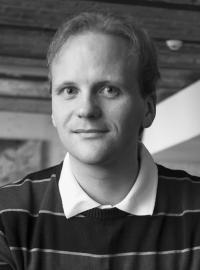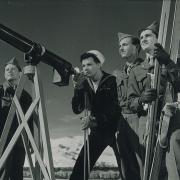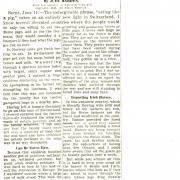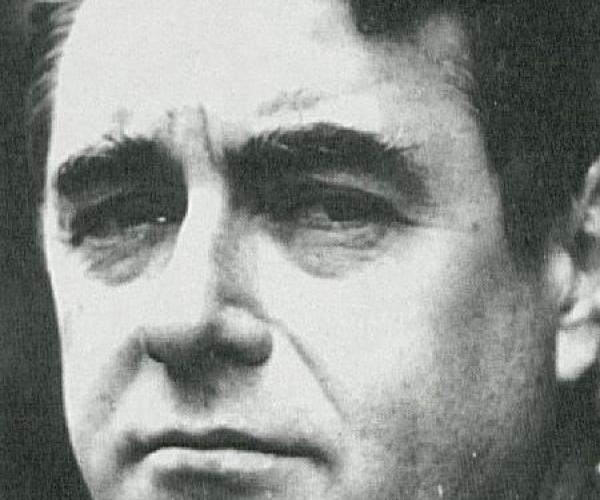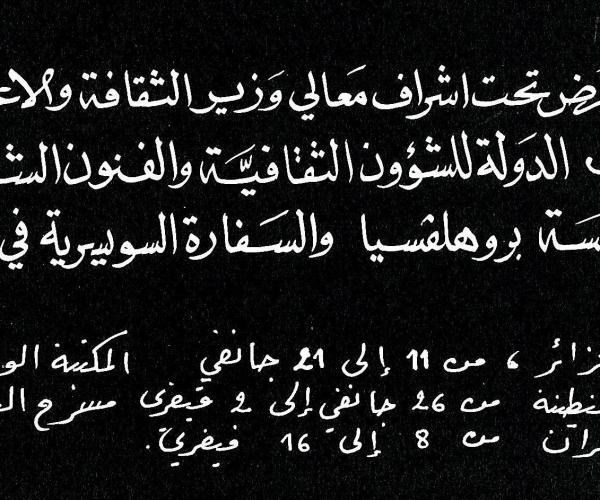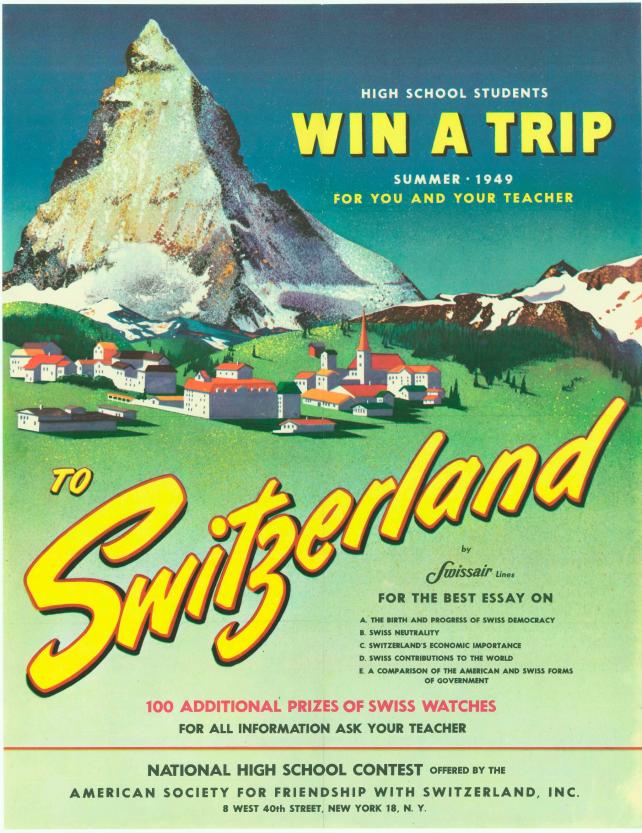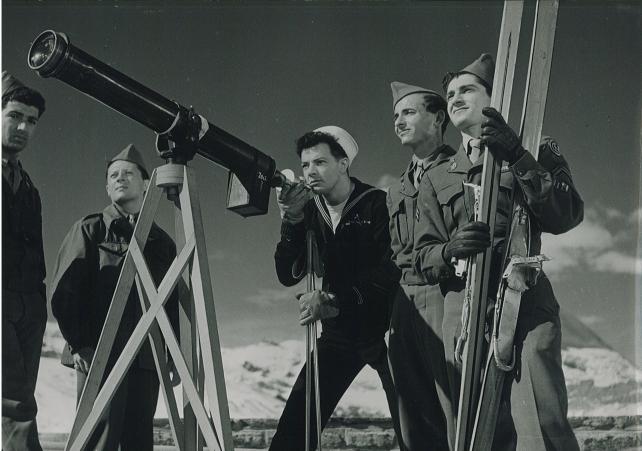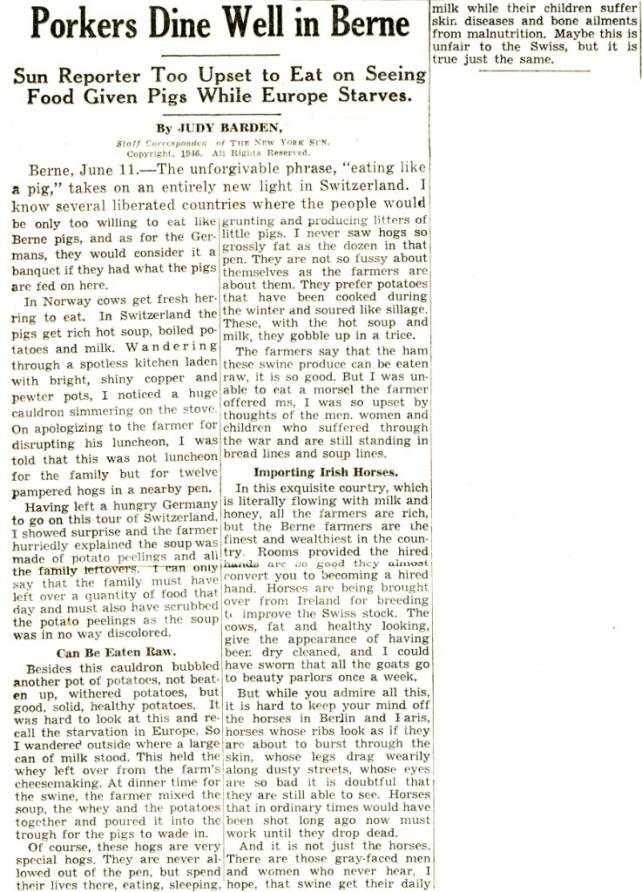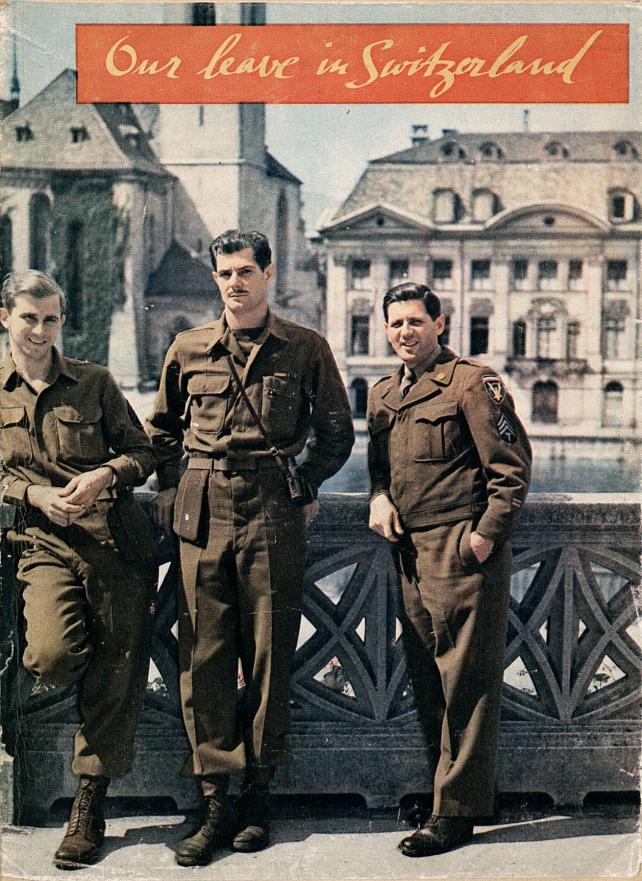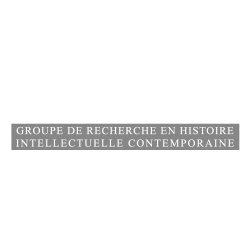Post-war American visitors
During the post-war period, Switzerland saw an influx of American visitors between 1945 and 1947. More than 300,000 GIs stationed in Italy, Germany and France visited Switzerland as part of the United States Leave Action. This initiative was not only intended to fill Swiss hotels (empty in this period due to the lack of European tourists), but also as a huge publicity stunt to promote Switzerland.
The Swiss Radio and Television Broadcasting Service made its shortwave transmitter available to the American soldiers to send messages and talk about their experiences during their holidays in Switzerland. Thanks to Swiss Tour, a comedy film produced by Praesens SA and released in 1950, the soldiers’ impressions of their travels through the country made it to the screen. Again, the well-established clichés about the scenery, the rural idyll, precision work and the technical advances of Swiss industry were employed. At the same time the film reinforced the myth of the Sister Republics and the everlasting friendship between the “oldest” and the “greatest” democracy of the world.
As part of their charm offensive after the end of the war, the federal authorities went to great lengths to invite media representatives from the USA. On the 1st of June 1946, a group of eleven American journalists arrived in Basel and subsequently completed an official tour including meetings devoted to political issues as well as trips to places of interest, such as several factories and of course the Jungfraujoch.
The high hopes tied to the importance of this event for Swiss officialdom were disappointed because the journalists’ visit was not without blunders. In Lugano, a signatory to the Declaration of the 200 of 1940, which had called for Switzerland to adapt to a new European order under the Axis powers, was part of the welcoming committee. Moreover, in view of the suffering in the neighbouring states, the dinners in luxury hotels did not meet with much enthusiasm.
Those negative impressions featured in the articles the journalist published about their Swiss Tour. The well-fattened pigs in the Canton of Bern served to illustrate the contrast between European misery and Swiss prosperity in an article entitled Porkers Dine Well in Bern published on June 11, 1946 in The New York Sun.
During the post-war period, also the American Society for Friendship with Switzerland, founded 1945 in New York by Swiss companies, relies on the journey as a means to promote Switzerland’s image in the USA.
In 1949, the society organised a writing competition at more than thousand high schools and awarded the best essay on a Swiss topic with a flight to Switzerland, sponsored by Swissair. Other prizes included watches “Made in Switzerland.” The topics suggested were in line with the priorities of Switzerland’s information policy, including questions as to neutrality, the history of Swiss Democracy, the affinities between the political systems of Switzerland and the USA and the cultural achievements of the Alpine country. (tk)
Archives
AFS E2001(E) 1968/78, Vol. 52
AFS E2200.52 8, Vol. 6
Bibliography
Hauser, Claude : Heidi et les G.I.'s : une rencontre sur l'Alpe et ses enjeux pour la Suisse de l'immédiat après-guerre, in : Valsangiacomo Nelly (éd.), Les Alpes et la guerre : fonctions et images, Lugano, Casagrande 2007, pp. 331-350.

